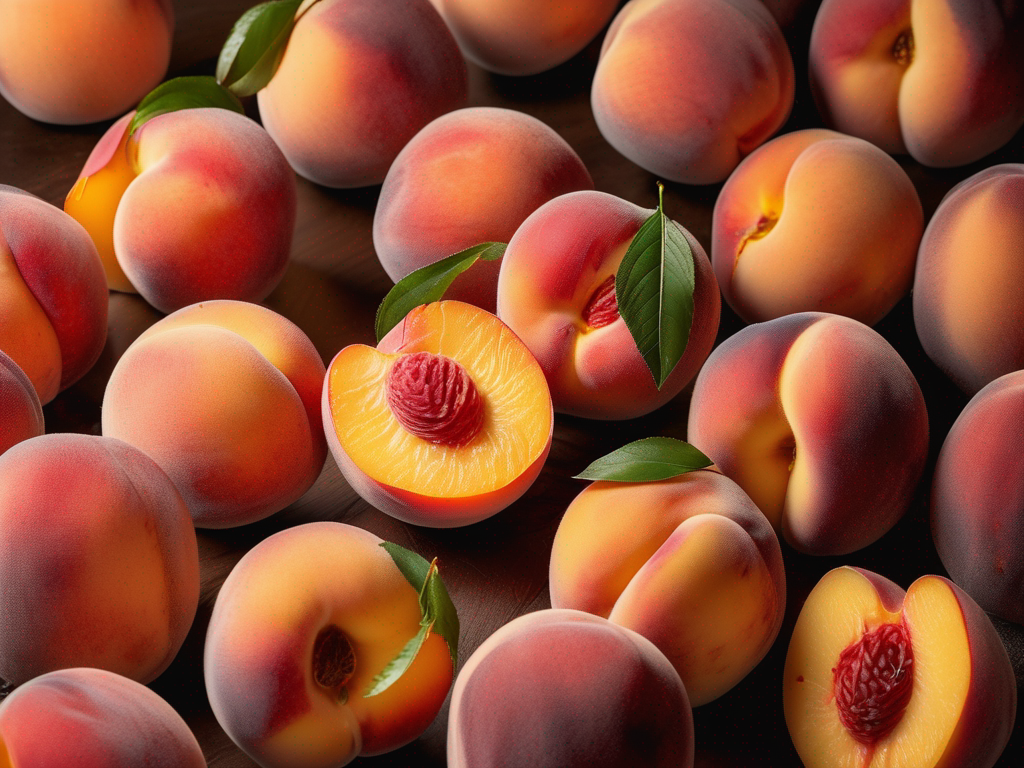
How to Tell if Peach Var Has Gone Bad and is No Longer Safe to Eat
Get Your Free Food Safety Cheat Sheet
30 most common foods with instant answers. Print it and stick it on your fridge—completely free!
How to Tell if Peach Var Has Gone Bad and is No Longer Safe to Eat
Peaches are a delicious and juicy fruit that are enjoyed by many around the world. However, like all fruits, they can spoil over time. It's essential to know how to tell if a Peach Var has gone bad and is no longer safe to eat to avoid any potential foodborne illnesses. In this blog post, we will discuss the signs of spoilage in peaches and provide you with practical tips on how to store them properly to extend their shelf life. (Peach var)
Signs of Spoilage in Peach Var
When it comes to peaches, there are several indicators that can help you determine if they have gone bad. Here are some common signs of spoilage to look out for:
1. Mold Growth
- Mold growth on the surface of the peach is a clear indicator that it has spoiled.
- The presence of mold can indicate that the peach is no longer safe to eat and should be discarded.
2. Discoloration
- Any significant changes in the color of the peach, such as dark spots or browning, can indicate spoilage.
- Discoloration can be a sign that the peach is past its prime and may not be safe to consume.
3. Texture Changes
- A mushy or slimy texture is a sign that the peach has started to break down and spoil.
- Any changes in texture, such as soft spots or wrinkles, can indicate that the peach is no longer fresh.
4. Foul Odor
- If the peach emits a foul or sour smell, it is a strong indication that it has gone bad.
- A bad odor is a sign of bacterial growth and spoilage in the peach.
5. Taste Test
- If you notice any off-flavors or a sour taste when biting into the peach, it is best to discard it.
- Trust your taste buds; if the peach doesn't taste right, it's better to be safe than sorry.
Proper Storage Tips for Peach Var
To ensure that your peaches stay fresh for as long as possible, follow these storage tips:
- Refrigeration: Store ripe peaches in the refrigerator to slow down the ripening process and extend their shelf life.
- Avoid Moisture: Keep peaches dry to prevent mold growth. Place them in a perforated plastic bag to allow for air circulation.
- Separate: Store peaches away from other fruits, especially those that produce ethylene gas, as it can speed up the ripening process.
- Check Regularly: Inspect your peaches regularly for any signs of spoilage and discard any that show the aforementioned signs.
By following these storage tips, you can enjoy your peaches at their peak freshness and flavor.
Conclusion
Knowing how to tell if a Peach Var has gone bad is essential for ensuring food safety and preventing foodborne illnesses. By being aware of the signs of spoilage and following proper storage practices, you can enjoy fresh and delicious peaches while minimizing the risk of consuming spoiled fruit. Remember to always trust your senses and err on the side of caution when in doubt about the freshness of your peaches. With these tips in mind, you can confidently enjoy this delightful fruit without any worries about its safety. (Peach var)
Authoritative Food Safety References
These agencies and university labs inform every tip and health precaution we publish.
USDA FoodKeeper – Cold Storage Guidelines
Official refrigerator, freezer, and pantry timelines maintained by the U.S. Department of Agriculture.
Visit USDA FoodKeeperFDA Produce Safety Rule & Grower Guidance
Field-to-fridge handling practices that prevent contamination of fruits, vegetables, and leafy greens.
Visit FDA Produce SafetyCDC Foodborne Illness Prevention Hub
Surveillance-backed guidance on pathogens, symptoms, and steps to reduce foodborne illness risk.
Visit CDC Food SafetyUC Davis Postharvest Technology Center
University research detailing optimal storage atmospheres for produce after harvest.
Visit UC Davis PostharvestPenn State Extension – Home Food Preservation & Safety
Peer-reviewed extension bulletins on safe canning, chilling, and reheating practices.
Visit Penn State ExtensionGet Your Free Food Safety Cheat Sheet
30 most common foods with instant answers. Print it and stick it on your fridge—completely free! Want more? Upgrade to the complete guide with 70+ foods.
Scan your food directly and get instant safety info using our AI-powered camera feature.